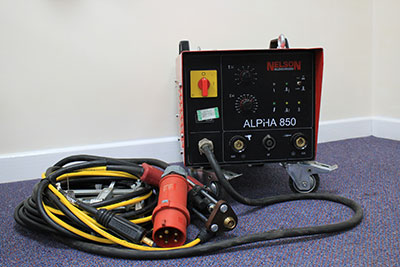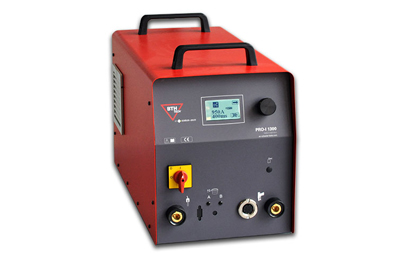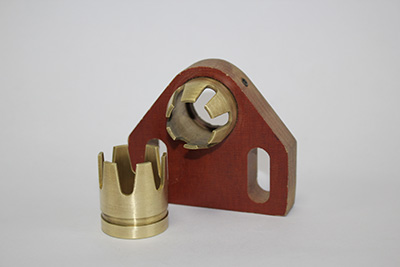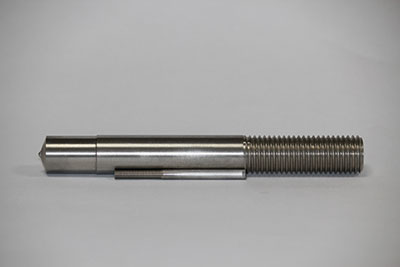Covering a wide range of fasteners from 3mm diameter through to 25mm diameter plus a selection of fasteners with rectangular cross-section to equivalent sizes.
The attachments are welded across their full cross-sectional area by a process in which the total energy of the arc is under highly accurate automatic control. As a result, welds of a high and consistant strength can be speedily and reliably produced by the operator.
With these advantages the drawn-arc process has found applications over a very broad field, probably its most popular use being as an attractive and time-saving alternative to fixing methods employing drilling and tapping. The system equipment can be used in engineering workshops – possibly in conjunction with bench-mounted production heads or, because of their compactness and portability, they are equally suitable for operation under site conditions.
One very popular application of this process is to be found in the civil engineering field – Thru deck studwelding for composite floor structure, covering sprayed-on concrete in chimneys, to steel slab reheating furnaces and road bridge decks, specially shaped studs can be supplied to hold mesh, secure rods, or for use without re-enforcing bars. In addition, headed studs can be used for joining steel liners to concrete shells and any kind of concrete construction requiring and anchorage of steel such as embedded plates, frames, curbing etc.
How it works:
A full studwelding equipment set comprises of:
- A D.C welding power source of the transformer-rectified or motor-generator type.
- A controller housing a timer unit and a single pole welding contractor.
- A portable hand-tool or bench-mounted head for holding and positioning the fastener.
Once the welding current and time settings have been made to suit the diameter of the stud, the fastener to be welded is loaded into the welding tool chuck and positioned in contact with the work piece. The switch on the tool is pressed and the remainder of the operation is carried out automatically.
A low value current is passed between the stud and the work piece and the stud is lifted by a solenoid in the hand tool, thus establishing a pilot arc. The main contractor now closes, applying the full welding tool current which is maintained for a period of time pre-set on the timer so that the end of the stud and the weld area of the work piece reach a molten condition. The hand tool solenoid is now de-energised and the stud is pressed into the weld-pool under controlled spring pressure and arcing conditions, so completing the weld. The weld circuit is now broke to finish the cycle which has taken only a fraction of a second.
There is an alternative system designed to produce the same end result, in this the timing of the weld in controlled by means of a flux cartridge with a pre-determined rate of burning. The cartridge being positioned under the stud to act as a resistance to necessary for building up welding temperature, this system may be applied to A.C and D.C welding power sources and is eminently suitable for insulation fasteners under rigorous site conditions.




